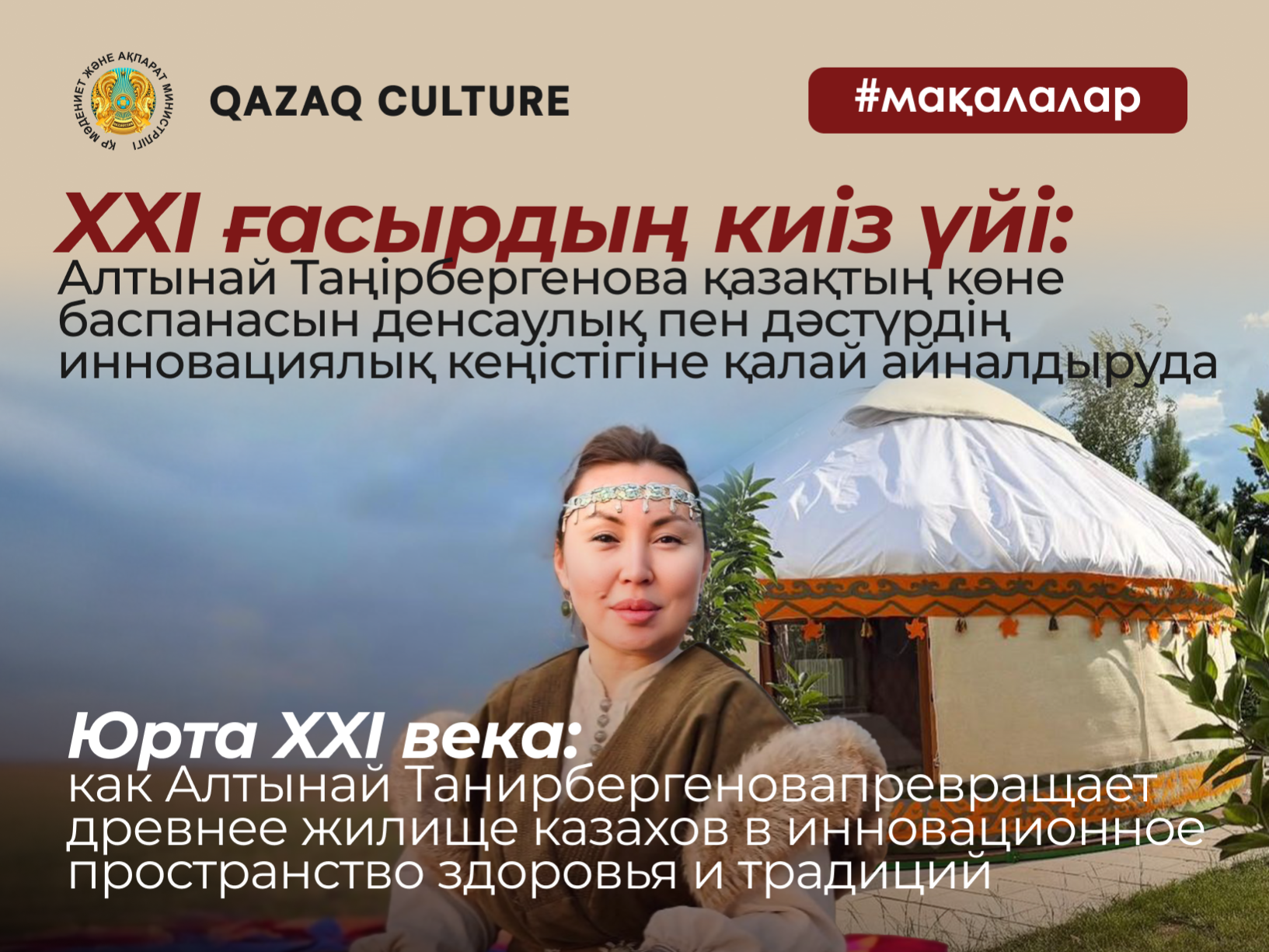Yurt of the 21st Century: How Altynai Tanirbergenova Transforms the Ancient Dwelling of the Kazakhs into an Innovative Space of Health and Traditions

For Kazakhs, a yurt has always been more than just a house. It symbolized the hearth, roots, spiritual unity of the family, and connection with nature. Today, this ancient dwelling is getting a second life thanks to enthusiasts who combine traditions with modern technologies. One of these people is Altynai Tanirbergenova, the founder of birch veneer yurts. Her team creates lightweight, environmentally friendly, and durable yurts, preserving their sacred meaning while making them comfortable for 21st century life.
In an interview with Qazaq Culture, Altynai told how she came to the idea of reviving yurts, why she considers them a place of power, and what it means for her to live under a shanyrak.
Do you remember the moment when you first decided to start making yurts?
— I am an engineer and economist by education, and later, after the birth of my third daughter, I received the profession of a psychologist. I worked at the BI Zhuldyzai Foundation, where we worked with special children. I saw how lovingly teachers communicated in Kazakh, and that was when a deep attachment to our language and culture was awakened in me. I began to read books, study traditions, and delve deeper into the ethnoculture. In 2015, I left the foundation and began working independently — I helped women who found themselves in difficult situations, and I thought about developing ethnotourism. It seemed to me that we did not have a community that would systematically convey the value and richness of nomadic culture. This is how the idea of reviving yurts was born.
Why a yurt? And why do you call it not just a house, but an eco-saving technology?
— The yurt is unique in its round shape. It harmonizes the body: even after spending half an hour inside, a person feels how his psycho-emotional state improves. It is not just a place to live, it is a space that affects health and consciousness. I understood: if foreigners come to Kazakhstan, the first thing they should see is a yurt as a symbol of a rich culture. And a real yurt, made of natural materials.
What is the sacred meaning of a yurt for you?
— In love for your genetic code. A yurt is a symbol of clan, family, warmth and hearth. It reminds us of our roots and heritage that we must preserve. For me, a yurt is about remembering who we are and where we come from. "Made in Qazaqstan"
You mentioned that you use specially designed machines. What is special about them?
— We revived ancient manual technologies, but modernized them with hydraulics. Now we are training artisans, expanding our staff. All our yurts are produced by domestic craftsmen. This is truly Made in Qazaqstan.
Why did you choose birch veneer?
— It is a time-tested material. We make up to 30 layers, and as a result we get a very strong, durable base. Such veneer does not swell, does not break, and the yurt can serve for decades. We want the yurt to not be a “one-day purchase”, but to be passed down from generation to generation, preserving the family values under one shanyrak.
How do people today, especially young people, react to yurts?
— Very positively. Young people are looking for roots, they are interested in history, and our task is to tell it correctly. To show that the yurt is not archaic, but a living tradition that can organically exist in the modern world.
How long does it take to assemble your yurt? How mobile is it?
— It can be assembled quite quickly. Our yurt is very light: if earlier only a man lifted the shanyrak, now a woman can easily handle it. We paint it in beautiful wood shades to preserve the atmosphere close to the spirit of our ancestors. How do you see the development of your company and the popularity of yurts?
— We are negotiating with partners, we want to enter the foreign market. Our goal is for every resident of Kazakhstan to have the opportunity to put a yurt in the yard of their home. We are currently preparing yurts for rent.
For you, is a yurt a business, a mission, or something more?
— It is definitely more than a business. I live and sleep in a yurt with my husband. For me, a yurt is a return to myself. Everything there is natural, environmentally friendly. This is my mission: to create yurts that will become family nests for families. In the future, we plan to develop multi-room yurts so that families can live under one shanyrak in the literal sense.
If you could describe a yurt in three words, which ones would you choose?
— A common home, a heart, a place of power.